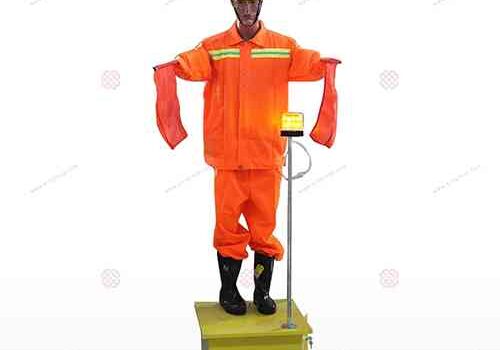As road networks continue to expand and traffic volumes increase, ensuring roadway safety has become more crucial than ever. While many focus on technological advances like autonomous vehicles or intelligent traffic systems, basic yet effective roadside safety tools often go overlooked. Among these, delineators and flexible posts stand out as simple, cost-effective, and highly impactful components in reducing accidents and enhancing driver awareness.
This article explores how these tools contribute to safer roadways, the different types available, and their real-world impact on traffic management.
What Are Delineators and Flexible Posts?
Delineators are highly visible, often reflective, vertical markers installed along the sides of roads or in the center of lanes to guide traffic, especially in low-light or hazardous conditions. Their primary purpose is to visually direct drivers, helping them maintain lane discipline and better anticipate curves or changes in the road layout. Flexible posts, on the other hand, are upright bollards or posts made from materials like polyurethane or rubber. Unlike traditional rigid barriers, these posts are designed to bend on impact and return to their original shape, minimizing damage to vehicles while still providing a strong visual cue for lane division or restricted areas.
The Importance of Visibility and Guidance
One of the main causes of roadway accidents is driver misjudgment, often due to poor visibility, especially during nighttime or adverse weather. Delineators, with their retroreflective properties, significantly improve visibility by providing continuous guidance along roadways, bridges, tunnels, and curves. Flexible posts are also increasingly used in high-risk areas such as merging lanes, pedestrian crossings, and bicycle lanes, helping separate traffic streams and keep vehicles within designated boundaries.
Key Benefits of Delineators and Flexible Posts
1. Improved Driver Awareness
By offering consistent visual cues, delineators reduce confusion for drivers, especially in complex or unfamiliar traffic scenarios. This clarity leads to better decision-making and fewer lane deviations.
2. Cost-Effective Safety
Compared to guardrails or concrete barriers, delineators and flexible posts are affordable to install and maintain. Their simplicity makes them ideal for both permanent and temporary deployments, such as during roadwork or detours.
3. Minimized Vehicle Damage
In the event of a collision, flexible posts bend rather than break, reducing the severity of impacts and preventing costly damage to both the vehicle and roadside infrastructure.
4. Versatility Across Applications
From urban intersections to rural highways, these tools are used across various road types. They are also instrumental in managing pedestrian safety zones, separating bike lanes, and directing traffic during events or emergencies.
Applications in Real-World Traffic Scenarios
1. Urban Settings:
In crowded city streets, flexible posts are frequently used to separate bike lanes from vehicle traffic, creating safer conditions for cyclists and reducing the risk of side-swipe accidents.
2. Highways and Freeways:
Delineators installed along curves, exits, and merging lanes provide visual continuity that helps drivers stay on course, particularly during nighttime travel or inclement weather.
3. Temporary Roadwork Zones:
Both delineators and flexible posts are vital in construction zones, where lane shifts or closures are common. Their bright colors and reflective surfaces alert drivers well in advance, improving worker safety and reducing collision risks.
4. Parking and Access Control:
Flexible bollards and posts are often used in parking lots or access-controlled zones to prevent unauthorized entry while still allowing emergency vehicle access when necessary.
Technological Advancements in Roadway Delineation
As with many areas of infrastructure, innovation is shaping the next generation of delineators and flexible posts:
- Solar-powered LED delineators are now being deployed to improve night-time visibility without relying on external lighting sources.
- Smart delineators can be equipped with sensors to detect vehicle movements or environmental conditions and transmit data to traffic management systems.
- High-durability materials like UV-stabilized polymers increase longevity and reduce maintenance costs.
These advancements not only enhance performance but also align with smart city goals for integrated, data-driven traffic safety management.
Case Studies & Proven Impact
Numerous studies have confirmed the effectiveness of these tools:
- A FHWA (Federal Highway Administration) study showed that roadway delineation devices reduce nighttime crashes on rural roads by up to 30%.
- Municipal reports from cities like Portland, Oregon, demonstrated that adding flexible posts to bike lanes reduced vehicle intrusions by 79%, enhancing safety for non-motorized road users.
- Roadway tests in Europe and Asia have highlighted how delineator installation on curved mountain roads significantly reduced run-off-road crashes.
Conclusion: Small Tools, Big Impact
In the world of road safety, not every solution needs to be complex or expensive. Delineators and flexible posts, though simple in design, play a vital role in guiding drivers, reducing accidents, and promoting safer, more organized traffic flow. With the growing emphasis on Vision Zero initiatives and smart transportation infrastructure, integrating these tools into both new and existing roadways is a step in the right direction. Whether it’s a local municipality, a state transportation department, or a private contractor, the message is clear: prioritizing visibility and guidance saves lives.

